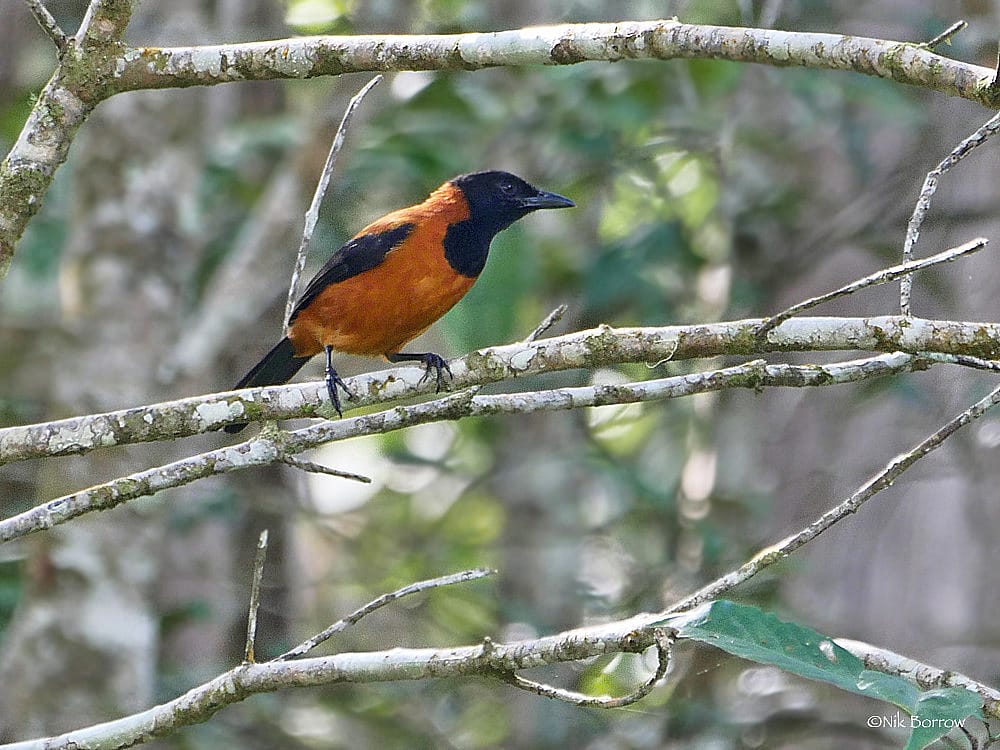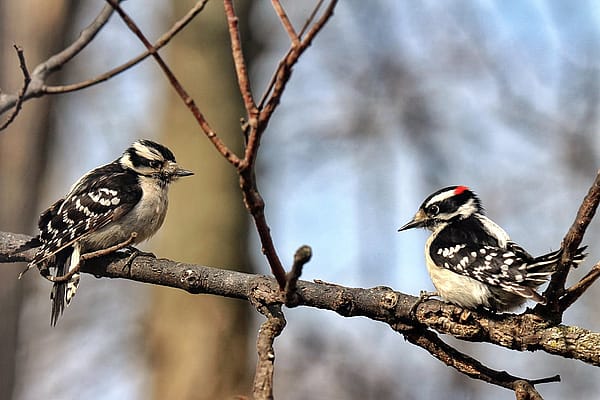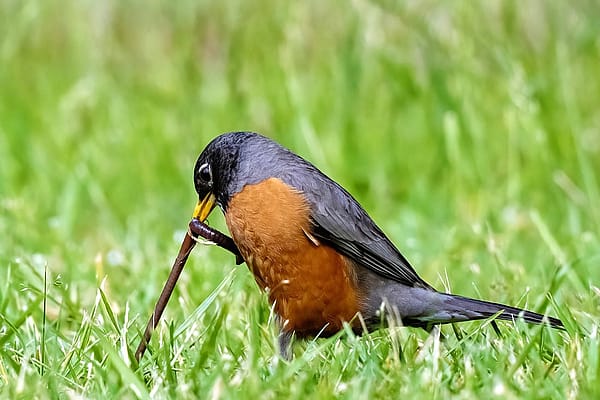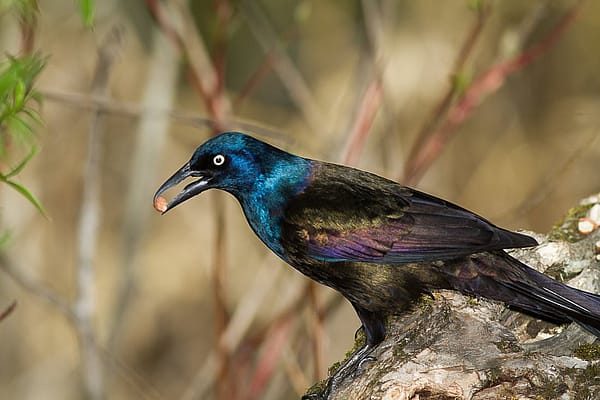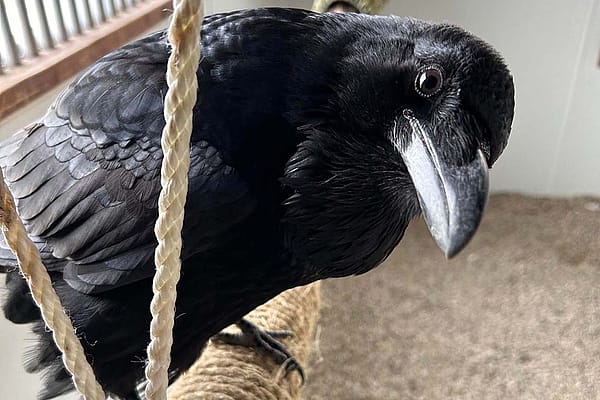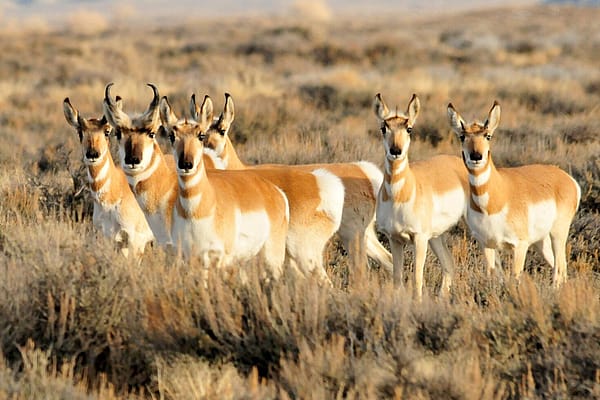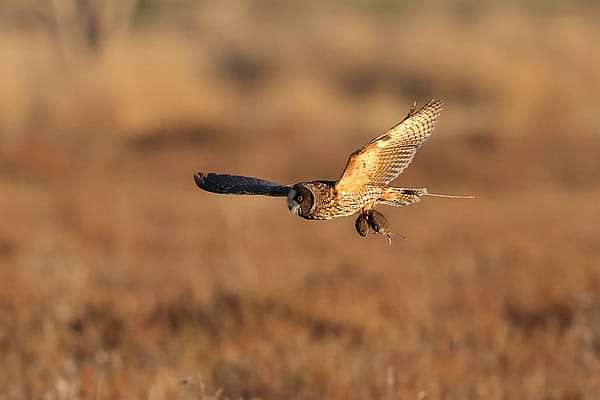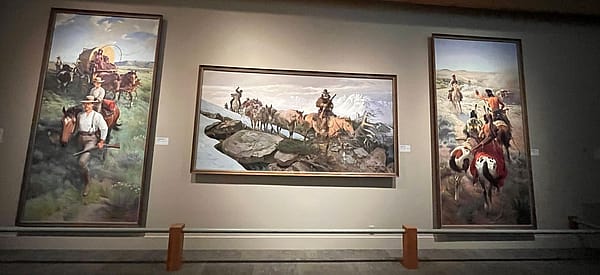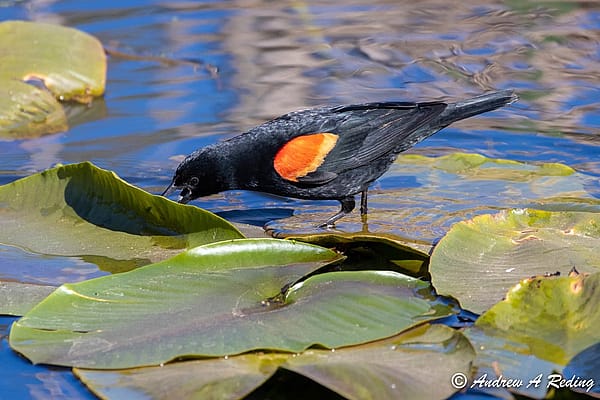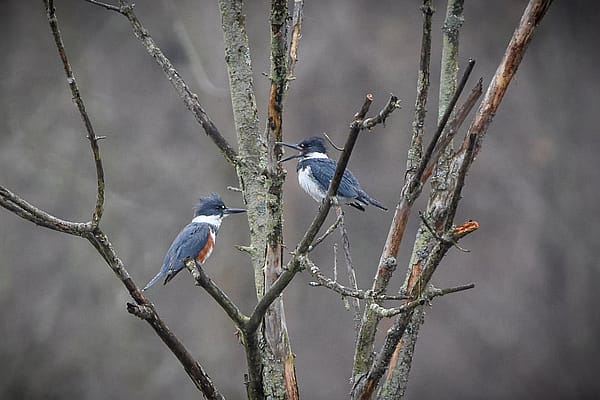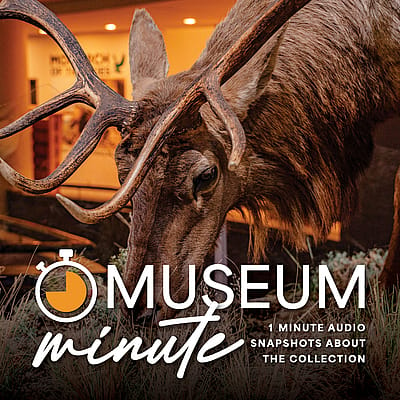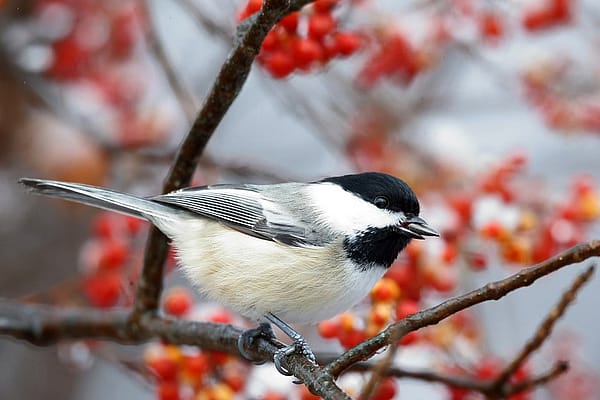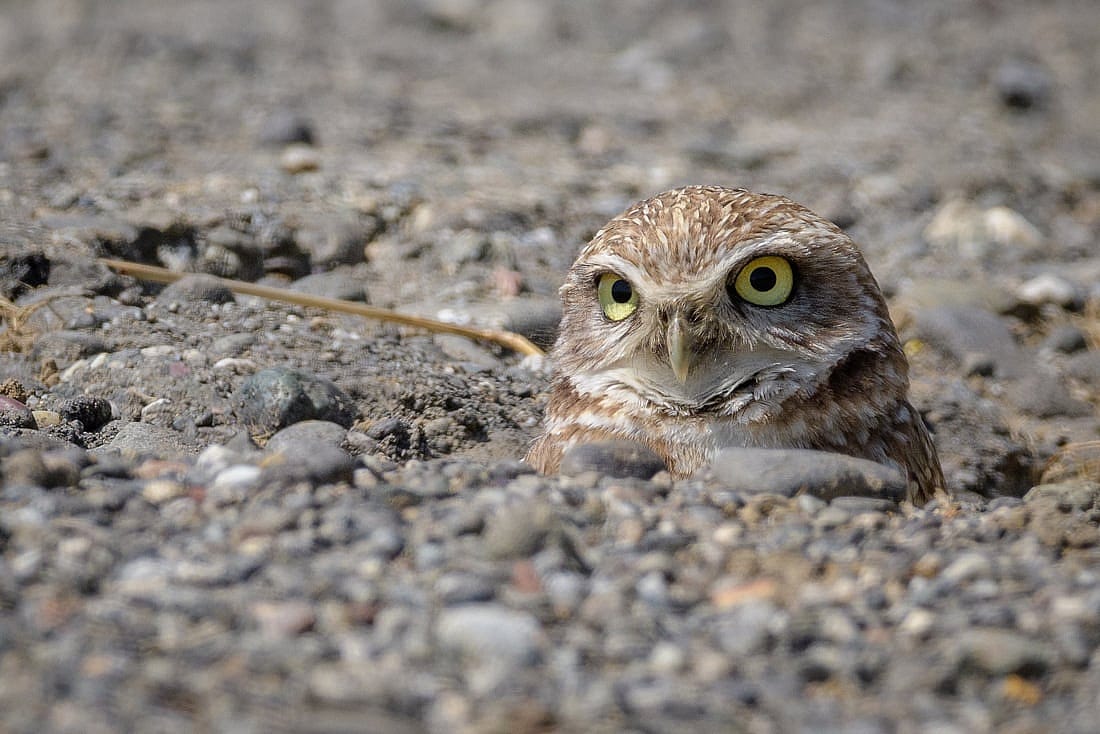
Nest Protection and Defense
In early Spring through the beginning of summer many birds are either incubating eggs or busy feeding hungry hatchlings. During this time, breeding birds use a variety of methods to protect their eggs, chicks, and nesting territories. Consequently, you may observe them fearlessly confronting animals larger than themselves in an effort to ward off predators. On the other hand, not all birds use aggressive behavior as their line of defense.

Maybe You Have Experienced This
The most obvious defense the majority of people are familiar with is dive-bombing. You have probably seen birds aggressively dive-bombing other birds or animals, or you may have been dive-bombed yourself. This behavior is called mobbing. If you have not read my previous blog on this subject and are interested in mobbing, follow this link to “Mobbing: What It Is, and Why Do Mobbed Birds Put Up With It”.
https://centerofthewest.org/2019/01/21/mobbing-what-it-is-why-birds-dont-defend-themselves/
According to the Audubon web page, Goshawks have put big gashes in people’s heads while defending their nests. When banding nestlings for scientific purposes, it has been found that wearing a helmet is wise with some species.
Check out this amazing video of a Peregrine Falcon protecting her nest.
https://www.youtube.com/watch?v=uapP1yldldk&list=PLF84700C2BC54B383&index=33&t=67s
Protection by Physical Distraction
Killdeer, American Avocets, Red-capped Plovers, and Short-eared owls are just a few of the species that practice distraction by attempting to lead the potential nest-raider away. Putting on a performance worthy of any stage, these birds impersonate a broken wing behavior. While flopping around and moving farther from the nest the parent attempts to draw the perceived predator away from the nest and/or young.
This video is an example of a killdeer feigning injury to distract a predator away from its nest.
https://www.youtube.com/watch?v=Q7h0VrqDd94
And for a smile, enjoy this Killdeer defense cartoon:
https://www.yourwildcity.com/comic/killdeer-drama/
What is it?
Pretending to be something else may also work. How about looking like a snake? Some birds will hiss and sway their heads around. Or maybe a mouse? Birds such as Piping Plovers and other shorebirds, as well some grassland sparrows, will attract attention by noticeably running through grass, thus mimicking a rodent. Or maybe a mimicking a very distinct warning sound? When threatened, Burrowing Owls and their chicks have learned to produce a hissing call similar to the warning sound rattlesnakes make!
Vocal Distractions Can be a Warning
Many birds have warning calls that alert trespassers that they should vacate the area. Birds may also have warning sounds for the chicks, alerting them to stay still and quiet. At times both may be used, one after the other. First, warn the chicks. Then, follow this by calling out a warning or making a distracting noise intended for the encroaching intruder. According to Cornell’s Birds of North America database, these distracting sounds may include “short, snarling, and faint cries” in Sanderlings (a shorebird that breeds in the High Arctic Tundra), “growling and hissing” in Mexican Whip-poor-wills, and a “ventriloquial whisper song” in Bachman’s Sparrows.”
What an Awful Smell!
Although most birds do not have a strong sense of smell, many other animals do. Therefore, being stinky doesn’t help with other birds. With humans and other mammals, however, a smelly defense may help out.
A Fulmar, which is a kind of sea bird related to albatross, is one of the few birds with a strong sense of smell. They themselves can be very stinky. These birds have a stomach oil they can spray at predators as a defense mechanism. This can be more than unpleasant as it can gum up the wing feathers of a predatory bird, causing it to fall to its death. And not only do these birds smell badly, so do their eggs. Even Fulmar chicks use this behavior. They can spit out this foul oil almost from the time they hatch. Luckily for the parents, the Fulmar’s feathers do not become gummed up by this substance. For this reason, if a chick spits at it’s parents, it will not cause any problem for the adult.
Two other examples of using smell to ward off danger are Turkey Vultures and Short-eared Owls. If a predator gets too close to a Turkey Vulture, even a baby, it may find that a stream of foul, acidic vomit may be discharged toward them. Short-eared Owls may defecate on their eggs before flying from their nests if a predator is approaching. It is thought that this covers up the natural smell of their eggs.
Being Poisonous May Be the Solution
When people think of poisonous animals typically snakes and spiders come to mind. But did you know that there are also poisonous birds?
*Note: Venomous animals inject a toxin when they bite while a poisonous animal unloads a toxin when they are bitten (think of venom as an offensive move and poison as a defensive move)
The most poisonous bird is the Hooded Pitohui of New Guinea. It is a beautiful bird, but its skin and feathers contain a poisonous neurotoxin alkaoid. This is the same poison found in the skin of South American poison dart frogs. Scientists believe that this acts as a chemical defense against predators, including humans. The Pitohui do not produce the toxin themselves, rather they obtain it from their diet. As they dine upon the poisonous Choresine Beetle, the poison is concentrated in their feathers and skin. As a result, another bird or animal would have a problem dining on this bird.
If you made the mistake of touching one of these birds, you would soon experience a numbness and tingling in your hands. One may also experience skin burns and sneezing. Scientists theorize that the Hooded Pitohuis may also rub the toxin on their eggs and chicks, thus protecting them from predators too.
The hooded Pitohui is not the only poisonous bird. Two of its close relatives, the Variable Pitohui and the Brown Pitohui are also poisonous birds, along with a few others including the Blue-capped Lfrita of New Guinea and Papua New Guinea, and the Little Shrikethrust living in Australia, Indonesia, and Papua New Guinea.
If You Can’t Be Seen, You are Safer
Camouflage can be very useful to hide from predators. Birds may hide their nests by using building materials that are found in the immediate area. As a result, the nests blend in with the environment causing them to be more difficult to see. As an example, Killdeer will make a scrape on the ground in which to lay their eggs. Their eggs are speckled, and the birds will add items such as shells, sticks, and pebbles to the nest to help the eggs blend in. This makes them more camouflaged and much harder for predators to see.
Turkey Vultures like to lay their eggs in hidden places such as barn haylofts, abandoned houses and sheds, caves, hollow logs, hollow areas in old trees, burrows, haystacks, thickets, rock crevices, on cliffs, and even occasionally in abandoned vehicles. Although not camouflaged, these are good, often safe hideaways where predators are not likely to spot them.
Incubating eggs and raising chicks is hard work. Therefore, in almost all species it takes at least two parents to successfully raise the young. One exception to this is hummingbirds, which are raised solely by the female. If you would like to explore this topic more, this link will take you to my previous blog, “Hummingbird Nesting and Deadbeat Dads, or Are They?”
https://centerofthewest.org/2016/01/04/hummingbird-nesting-and-deadbeat-dads-or-are-they/
Photo Credits:
Peregrine attacking a Turkey Vulture by C&C Saladin downloaded with permission from C&C Ohio Peregrine Page
Peregrine Falcon mobbing a Bald Eagle by Mike Baird, Attribution 2.0 Generic License
Killdeer Feigning Injury by Ottawa County Parks, Attribution-NonCommercial 2.0 Generic License
Burrowing Owl peeking out of burrow by Becky Matsubara, Attribution 2.0 Generic license
Coots giving warning sounds by Alicia Lynn, Attribution-NonCommercial 2.0 Generic license
Turkey Vulture Chicks by Richard Bonnett, Attribution-NonCommercial-NoDerivatives License
Hooded Pitohui by Nik Borrow, Attribution-NonCommercial 2.0 Generic license
Killdeer nest by Whitney H, Attribution-NonCommercial-NoDerivs 2.0 Liceense
Written By
Anne Hay
Anne Hay has a Bachelor's degree in Elementary Education and a Master's in Computers in Education. She spent most of her working years teaching third grade at Livingston School in Cody, Wyoming. After retiring she began doing a variety of volunteer work for the Buffalo Bill Center of the West’s Draper Natural History Museum. Anne loves nature and has a concern for the environment. She believes that educating the public, so that they will have a better understanding and appreciation for the natural world, is very important. Because of this belief, volunteering at the Center is a perfect fit. She spends time in the Draper Lab, observing eagle nests for Dr. Charles Preston’s long-term research project on nesting golden eagles, writing observation reports of raptor sightings in the Bighorn Basin, and working with the Draper Museum Raptor Experience. Anne states that, “Having a bird on my glove, is one of my all time favorite things in life.”




